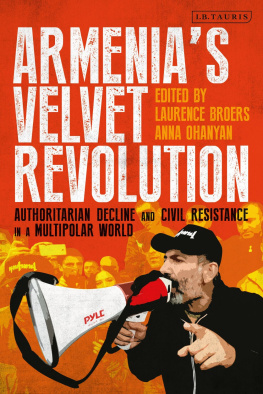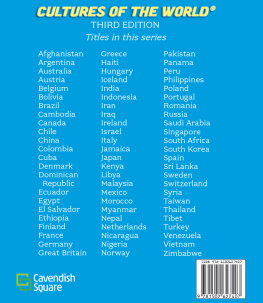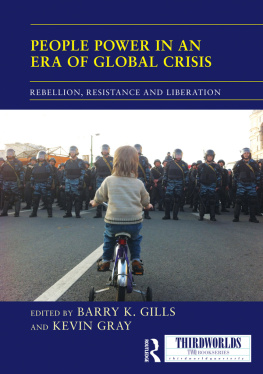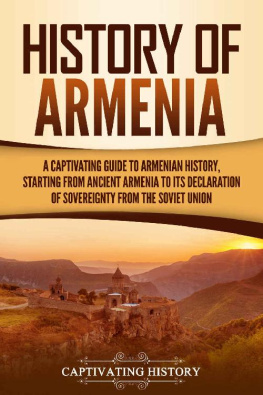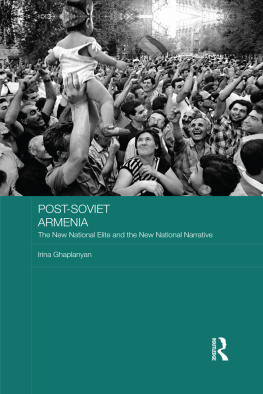Pavel K. Baev is a research professor at the Peace Research Institute Oslo.
Laurence Broers is Caucasus Programme Director at peacebuilding organization Conciliation Resources and an associate fellow at the Royal Institute for International Affairs at Chatham House. He is the author of Armenia and Azerbaijan: Anatomy of a Rivalry (2019).
Kristin Cavoukian holds a doctorate in political science from the University of Toronto.
Salpi Ghazarian is Director of the Institute for Armenian Studies at the University of Southern California.
Richard Giragosian is the founding director of the Regional Studies Center, an independent think-tank located in Yerevan, Armenia, and serves as both a visiting professor at the College of Europes Natolin Campus and a senior expert at Yerevan State Universitys Centre for European Studies.
Anna Ohanyan is a two-times Fulbright scholar (201213) and the Richard B. Finnegan Distinguished Professor of Political Science and International Relations at Stonehill College in Massachusetts. She is the author of Networked Regionalism as Conflict Management (2015) and the editor of Russia Abroad: Driving Regional Fracture in Post-Communist Eurasia and Beyond (2018).
Yevgenya Jenny Paturyan is an assistant professor in the Political Science and International Affairs Program at the American University of Armenia (AUA), Yerevan.
Jonathan Pinckney is a programme officer with the programme on non-violent action, U.S. Institute of Peace, and is the author of From Dissent to Democracy: The Promise and Perils of Civil Resistance Transitions (2020). He received his PhD in 2018 from the Josef Korbel School of International Studies at the University of Denver.
Tamar Shirinian is a postdoctoral teaching fellow in the Department of Anthropology at the University of Tennessee, Knoxville. Her research interests are in the tensions between political economy and gender and sexuality, especially in how anxieties around sexual perversion in post-socialist contexts are giving rise to new nationalisms and forms of the geopolitical.
Mikayel Zolyan is a historian and political analyst from Armenia.
On 14 April 2018, my son and I were in a car heading from Mush to Van, then from Van to Kars in Turkey. My grandparents are from somewhere in that region Ill never know exactly where and so, I make this journey for many reasons, including a search for a place to belong. On the road, near Ani, within physical view of Armenia but at a border that remains closed, I was following, with amazement and incredulity, live reports of a new sort of protest gaining ground on the other side of the border in Armenia. My source was CivilNet.am, streaming on my mobile phone.
In March 2018, a few hundred people had joined Nikol Pashinyan, a journalist turned activist, on a walk across Armenia. The day before my drive to Kars, they had arrived in Yerevan as exemplary students of the tactics of civil disobedience, staying two steps ahead of authorities who were alternately confident and confused. Pashinyan and his cohort of supporters were prepared to disrupt daily life in order to bring about serious political change. Pashinyan called his movement My Step a step towards a bold and clearly articulated intent: to bring down the solidly entrenched head of government, Serzh Sargsyan, and with him a countrywide economic and political monopoly. Pashinyan invited each individual Armenian to take your step and join the movement. On 13 April, his first day in Yerevan, hundreds had turned into thousands. This felt different. My son and I changed course, leaving Kars behind, and drove, via Georgia, to Armenia.
What was happening in Armenia was also a search to belong to belong to a society with a responsive government elected by the people, a society with responsible citizens accepting of their role in building an egalitarian, prosperous and desirable country. This quest for political identification, which had begun earlier in the decade, was reaching a culmination of sorts. There had been repeated expressions of political and social frustration prior to this. Yet as the first generation to have been born after the collapse of the Soviet Union the first genuinely post-Soviet generation matured, it was these young people, in their twenties, who were visibly leading and setting the tone of the demonstrations and demands. They wanted a hand in building the democracy they had been promised, a democracy that offered them choices and that took their thoughts and needs into account, and where economic opportunity and political access were available to everyone. They reacted to perceived injustice in specific government decisions by creating ad hoc collectives that brought people to the street. They registered successes small and large. And they learned and taught others that in the absence of functioning, accountable public institutions, these popular demonstrations were necessary. Their message was that the street was the only institution that would help them build that secure, hopeful, inclusive society to which they would want to belong.
Oddly, Armenias news media did not cover these civic actions. Just as it had not covered the history-changing events of 1988. Then, in the waning days of the Soviet empire, countrywide protests, with tens of thousands, hundreds of thousands and, on a few occasions, perhaps as many as one million Armenians were overlooked on the Soviet Armenian airwaves in favour of Verdis operas. Instead of news outlets, the best instruments of information dissemination were the massive gatherings in the centre of Yerevan. At first, these demonstrations condemned environmental excesses. Once chemical production plants were shut down, the public understood the power of such mobilization. Soon after, protesters gathered in solidarity with the Armenian population of Nagorny Karabakh in the neighbouring republic of Azerbaijan, who, following Soviet Communist Party General Secretary Mikhail Gorbachevs calls for openness, demanded self-determination. Later, the rallies articulated calls for independence. Throughout, these mass meetings were unbelievable manifestations of sophisticated, deep political understanding. Questions and answers sounded throughout the massive meetings, and people gathered and dispersed peacefully. In the absence of responsible media, a nascent civil society created its own public square. Appropriately enough, it was the Matenadaran, Yerevans repository of ancient manuscripts and learning, that was the site of these gatherings and that became the public agora.
Although twenty difficult years had passed since these never-before-seen mass protests that culminated in a collapsed USSR and an independent Republic of Armenia, some things had remained woefully unchanged. In 2011 and 2012, too, television continued to ignore every event of social or political consequence that did not have a government-sanctioned or government-orchestrated public relations value. Live television did not exist. The first time these demonstrations were covered live was by the online bilingual news channel CivilNet, which went live in 2011 by reporting on Armenias first-ever local elections, as they happened. I had co-founded CivilNet, and its parent organization Civilitas, just a few years earlier, and its twenty-something-year-old staff was deeply aware of its role in making history.

